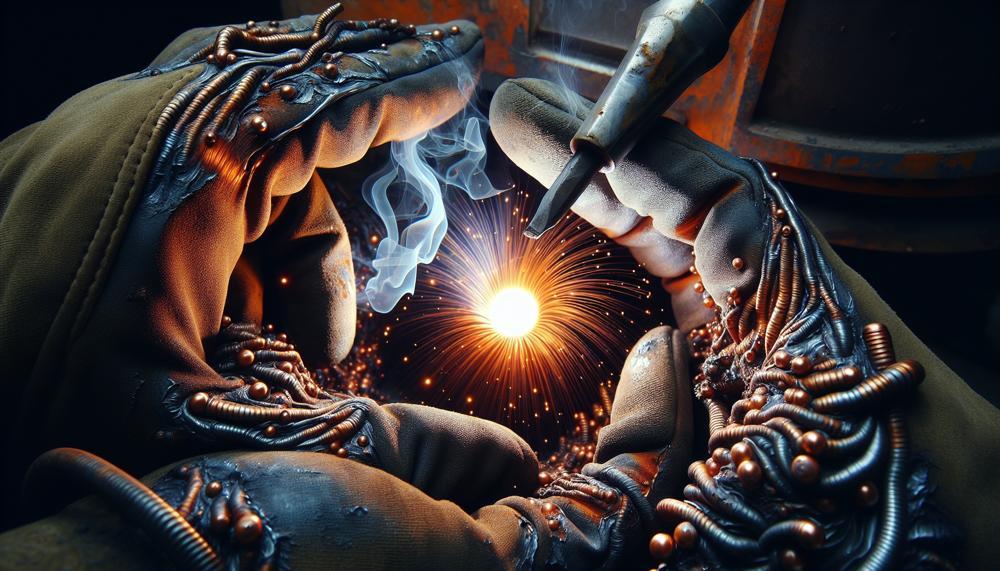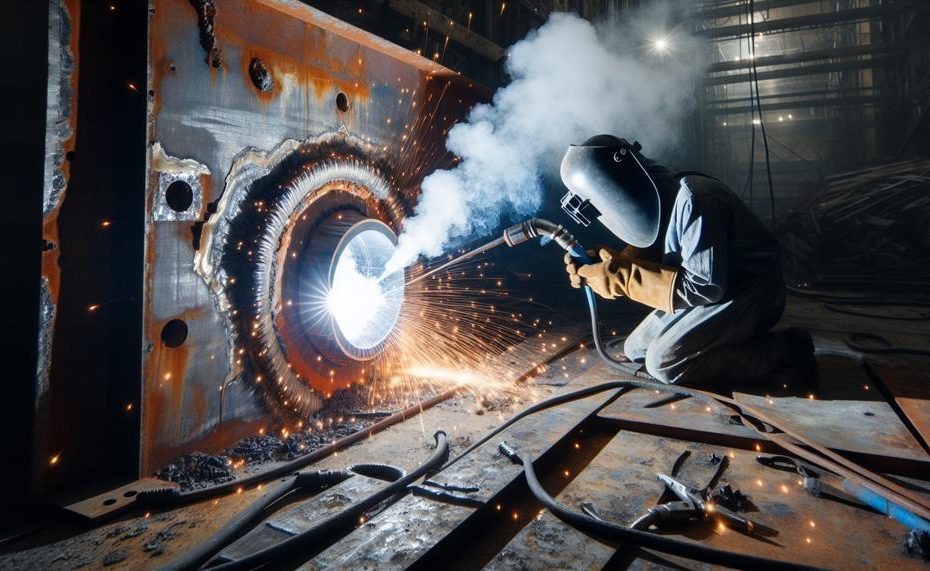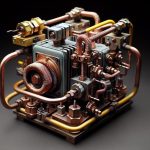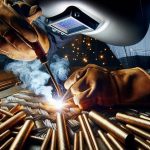Are you tired of the stubborn welding marks marring your metal projects? Say goodbye to them with our expert tips on removing welding. In this blog post, we will guide you through the process of safely and effectively removing welding from your metal surfaces.
Whether you’re a DIY enthusiast or a professional welder, these methods will help you achieve a clean and smooth finish. So put on your safety gear, and let’s get started.
In this comprehensive guide, we will cover:
- The importance of taking proper safety precautions when removing welding
- Essential tools and materials needed for the job
- Various methods for removing welding, including grinding, cutting, and chemical solutions
- Tips and tricks for achieving a flawless finish
- Precautions to consider when working with different types of metals
- Common mistakes to avoid during the welding removal process
By the end of this post, you’ll have all the necessary knowledge to remove welding like a pro. So let’s roll up our sleeves and bid farewell to those pesky weld marks.
Contents
- 1 How to Delete Welding
- 2 Understanding The Basics Of Welding
- 3 Different Types Of Welding Techniques
- 4 Tools And Equipment Needed For Welding
- 5 Safety Precautions For Welding
- 6 Common Welding Mistakes And How To Avoid Them
- 7 Different Types Of Welding Techniques
- 8 Tools And Equipment Needed For Welding
- 9 Safety Precautions For Welding
- 10 Common Welding Mistakes And How To Avoid Them
- 11 Conclusion
How to Delete Welding
When it comes to removing welding, there are a variety of methods available, each with its own unique approach and purpose.
Some methods involve using high temperatures to melt the metal, while others rely on mechanical tools to cut or break apart the weld.
Let’s take a closer look at some of the most common techniques used for removing welding and how they work:
- Thermal methods: These methods utilize extreme temperatures to soften and melt the metal, making it easier to remove. For instance, you can use a plasma cutter, which utilizes a high-temperature jet of plasma to quickly cut through metal. Another option is an oxy-acetylene torch, which combines oxygen and acetylene gas to create a flame that can reach temperatures hot enough to melt metal.
- Mechanical methods: These techniques involve using tools to physically cut, grind, or break apart the weld. This can include using angle grinders, drills, or bandsaws to remove the weld from the surface of the metal. Additionally, you can use belt grinders for faster cutting and shaping of metal surfaces.
- Chemical methods: In some cases, chemicals can be used to dissolve or weaken the weld. However, this method is not commonly used due to safety concerns and potential damage to the surrounding materials.
- Drilling and grinding: For stronger welds or when separating sheets of metal, drilling or grinding may be necessary. This involves using specialized tools to create holes or grind away at the weld until it is completely removed.
It is important to note that once a weld has been removed, it may not be possible to simply re-weld the components together again. In such cases, a different welding process, like brazing, must be used, or an entirely new weld needs to be created.
The specific method chosen will depend on the type of metal being welded and the desired outcome.
Understanding The Basics Of Welding
Welding is a potentially hazardous activity, and safety should be the top priority for welders. To ensure a secure working environment, there are several crucial safety precautions that should always be kept in mind when performing welding tasks. These include:
- Utilize protective gear: Wearing proper protective gear is the most significant safety precaution when welding. This includes a welding helmet with a minimum shade level of 12 to protect the eyes from harmful UV radiation and flashes. It is also necessary to wear gloves made of Kevlar and a leather apron to shield against sparks.
- Ensure adequate ventilation: Welding produces fumes and gases that can pose health hazards. Therefore, it is vital to work in a well-ventilated area or use proper ventilation equipment to prevent inhaling these toxic substances.
- Follow safety guidelines: Before starting any welding project, it is crucial to familiarize oneself with the Occupational Safety and Health Administration (OSHA) regulations and guidelines for a safe working environment. These guidelines cover everything from proper handling of equipment to emergency procedures.
- Be prepared for emergencies: Even with all necessary precautions, accidents can still occur. Therefore, it is essential to be prepared for emergencies by having a first-aid kit on hand, knowing how to operate fire extinguishers, and having access to emergency contacts.
- Use proper welding techniques: Using incorrect welding techniques can also lead to accidents. It is crucial to follow instructions carefully and avoid using damaged electrodes or losing focus during the process.
By implementing these key safety precautions, welders can ensure a safe working environment and reduce the risk of injuries while performing welding tasks.
Different Types Of Welding Techniques
There are a variety of different types of welding techniques, each with their own unique characteristics and applications. These methods vary based on the tools, materials, and processes involved.
Some of the most commonly used welding techniques include gas metal arc welding (GMAW), flux-cored arc welding (FCAW), electron beam welding (EBW), and high-frequency electrode-gas tungsten arc welding (HFE-GTAW).
Let’s take a closer look at these techniques:
| Welding Technique | Description | Main Uses |
| Gas metal arc welding (GMAW) or MIG welding | Utilizes a continuously fed wire electrode and a shielding gas to create a weld. | Ideal for most welding needs, whether it be at home or in a factory setting. |
| Flux-cored arc welding (FCAW) | Uses a tubular wire filled with flux to create a weld. Similar to MIG welding but does not require a shielding gas. | Best suited for thicker metals and outdoor applications. |
| Electron beam welding (EBW) | Utilizes a high-velocity beam of electrons to heat and fuse metals together. | A precise and high-quality method of welding, suitable for both very thin and thick metals. Commonly used in industries such as aerospace, automotive, and medical fields. |
| High-frequency electrode-gas tungsten arc welding (HFE-GTAW) | Involves the use of a tungsten electrode and high-frequency current to create an arc, while also using a shielding gas to protect the weld. | A specialized welding method that produces a clean and pure weld without any splatter, sparks, or fumes. Often used for welding stainless steel, aluminum, and other alloys. |
Tools And Equipment Needed For Welding
Welding is a highly specialized process that requires specific tools and equipment to ensure its effectiveness.
These tools are not only essential in facilitating the welding itself, but also play a vital role in post-welding processes.
Among the necessary tools and equipment for welding are a welding machine, a welding torch, a welding helmet, welding gloves, and a welding apron.
These tools are critical in the overall process of removing welding, as they provide heat, protection, and stability during the welding process.
Other important tools include wire cutters, pliers, chipping hammers, wire brushes, and angle grinders.
These tools are crucial in preparing metal pieces before welding and removing any excess weld after the process is complete.
Without these tools and equipment, it would be impossible to carry out the welding process effectively.
Safety Precautions For Welding
Welding is a high-risk activity that involves intense heat and potential hazards, making it crucial to take necessary safety precautions to protect yourself and others in the work environment.
These precautions include receiving proper training, utilizing the correct tools and equipment, wearing appropriate protective gear, following safety protocols and procedures, and keeping a clean and organized work area.
Let’s delve into each of these safety measures in more detail.
Proper Training:
Before undertaking any welding tasks, it is imperative to undergo comprehensive training and obtain necessary certifications. Welding entails handling high temperatures, electricity, and hazardous materials, so it is vital to understand the associated risks and how to mitigate them.
Adequate training also ensures you are well-versed in the equipment and tools used in welding and know how to operate them safely.
Using the Right Tools and Equipment:
As previously mentioned, having the right tools and equipment is crucial for safe welding. This includes welding machines, electrodes, cables, clamps, and protective gear such as welding helmets and gloves.
Using substandard or makeshift tools can result in accidents or poor outcomes, so investing in high-quality equipment is vital.

Wearing Appropriate Protective Gear:
Welding involves exposure to high levels of heat, UV rays, sparks, and fumes; thus, wearing suitable protective gear is essential.
This includes flame-resistant clothing, welding helmets with appropriately shaded lenses for the type of welding being performed, safety glasses or goggles, gloves, and boots.
Following Safety Protocols and Procedures:
Each welding job may have specific safety protocols and procedures that must be adhered to.
These may include setting up a safe work area free of fire hazards, ensuring proper ventilation to prevent inhaling fumes, having fire extinguishers nearby in case of emergencies, and following proper storage and handling procedures for welding materials.
Maintaining a Clean and Organized Work Area:

A cluttered work area can lead to accidents; thus, it is crucial to keep the welding area clean and organized.
This includes removing any flammable materials, keeping tools and equipment in their designated places, and properly disposing of waste materials.
Common Welding Mistakes And How To Avoid Them
Welding can quickly become a disaster if proper precautions are not taken. One of the most common mistakes is to skip preparation work, which may result in subpar welds and potential safety hazards.
It is essential to clean metal surfaces thoroughly before starting the welding process to achieve strong and durable welds. Additionally, ensuring a proper fit-up is crucial for successful welding results.
Another common mistake is using incorrect welding techniques for a specific project. Each welding technique has its strengths and weaknesses, and choosing the wrong one can lead to disastrous outcomes. Welders must take the time to understand the project requirements and select the most suitable technique accordingly.
To avoid any safety hazards, it is imperative to wear proper safety gear while welding. This includes protective clothing, gloves, and a welding helmet.
Welding produces intense heat and bright light that can cause severe burns and eye damage if proper precautions are not taken.
Different Types Of Welding Techniques
Welding is the process of melding two or more metal pieces together by melting them. It is a vital skill in various fields, including construction, manufacturing, and automotive. There are diverse types of welding techniques, each with its own distinct qualities and uses.
| Welding Technique | Description | Applications |
| Gas Metal Arc Welding (GMAW) or MIG Welding | Uses a continuously fed wire electrode and a shielding gas to create a weld. | Suitable for most welding purposes at home or in a factory. |
| Flux-Cored Arc Welding (FCAW) | Uses a tubular wire filled with flux to create a weld. Similar to MIG welding but does not require a shielding gas. | Ideal for welding thick metals and outdoor applications. |
| Electron Beam Welding (EBW) | Uses a high-velocity beam of electrons to heat and fuse metals. A precise and high-quality welding method that can weld very thin or thick metals. | Well-suited for the aerospace, automotive, and medical industries. |
| High-Frequency Electrode-Gas Tungsten Arc Welding (HFE-GTAW) | Uses a tungsten electrode and a high-frequency current to create an arc and a shielding gas to protect the weld. Provides a clean and pure weld without splatter, sparks, or fumes. | Effective for welding stainless steel, aluminum, and other alloys. |
Each type of welding technique has its own benefits and limitations. For example, GMAW is suitable for most welding purposes, while FCAW is more suitable for thicker metals. HFE-GTAW produces a cleaner weld, but it requires specialized and complex methods. EBW is precise and can weld thin or thick metals, but it involves costly equipment.
Moreover, the welding techniques also differ in terms of the materials and equipment used, as well as the techniques and safety measures required. For instance, stick welding (SMAW) uses a stick as the electrode and requires a flux coating to create the shield gas.
On the other hand, TIG welding (GTAW) utilizes a tungsten electrode and does not require any consumable filler material.
Tools And Equipment Needed For Welding
The art of welding calls for specialized tools and equipment, including welding machines, torches, and protective gear, to effectively fuse metal pieces together. These indispensable tools not only supply the required heat and electricity for welding, but they are also crucial in achieving the utmost precision and accuracy in creating robust and long-lasting welds.
To become a skilled welder, it is essential to have a good understanding of the various tools and equipment needed for welding. One of the most fundamental tools is the welding machine, which is used to generate heat and electricity for welding.
This machine can be powered by different sources, such as gas, electricity, or batteries. It is also available in various sizes and types, each designed for specific welding techniques and materials.
Another essential tool is the welding torch, which is used to direct the heat from the welding machine to the metal pieces being joined together. This torch comes in different styles, including TIG (Tungsten Inert Gas) and MIG (Metal Inert Gas) torches, each with its own unique features and benefits.
One cannot engage in welding without proper protective gear. Welding produces intense heat and bright light that can be hazardous to one’s eyes and skin. Protective gear such as a welding helmet, gloves, an apron, and safety glasses is necessary to protect oneself from burns, sparks, and harmful UV rays.
It is worth noting that these tools and equipment are not only vital for safety but also play a crucial role in achieving high-quality welds. As a welder gains more experience and expertise, they can expand their collection of tools and equipment to better suit their specific needs and preferences.
Safety Precautions For Welding
Always Protect Yourself:
- To protect yourself from potential hazards, make sure to wear appropriate protective gear, such as helmets, goggles, respirators, gloves, and suits.
- Ensure that the gear meets industry standards and is in good condition to provide adequate protection.
Create a Safe Workspace:
- It is crucial to have a safe and well-ventilated workspace while welding.
- Keep the work area clean and free of clutter to avoid tripping hazards.
- Make sure there are no flammable materials nearby.
Proper Ventilation is Key:
- Welding produces harmful fumes that can cause short-term irritation and long-term health effects.
- To keep yourself safe, make sure the workspace is properly ventilated. Use exhaust fans or open windows and doors to remove fumes.
Always Follow Industry Standards:
- When it comes to safety, welding equipment must always meet industry standards.
- Before using the equipment, check for any leaks, defects, or damages.
Utilize a Welding Safety Checklist:
- Whether you are an experienced or beginner welder, it is important to use a welding safety checklist.
- The checklist should include checking for proper protective gear, a safe workspace, proper ventilation, and equipment that meets industry standards.
Be Aware of Risks:
- Welding involves high heat, voltage, toxic fumes, and sparks which can cause burns and other injuries.
- Additionally, loud noises from welding can lead to permanent hearing damage.
- Be aware of these risks and take the necessary precautions to avoid them.
Specific Safety Measures for MIG Welding:
- MIG welding has its own set of safety precautions. These include ensuring proper grounding of the welding machine, using a proper welding gun, and keeping the work area clean to avoid fires.
Follow OSHA Guidelines:
- The Occupational Safety and Health Administration (OSHA) has specific guidelines for workplace safety in regards to welding.
- It is important to familiarize yourself with these guidelines and ensure they are followed to maintain a safe work environment.
Safety Checklists for Hobby Welders:
- Even if welding is just a hobby, it is crucial to follow safety precautions.
- Use a safety checklist to ensure all hazards are addressed before starting any project.
Common Welding Mistakes And How To Avoid Them
Welding is a precise and technical process that requires proper preparation, safety precautions, and the use of correct equipment and materials to avoid common mistakes. These mistakes can have detrimental effects on the quality of the weld, pose safety risks, and lead to inefficient welding processes.
To ensure a successful outcome, here are some common welding mistakes to avoid:
- Neglecting preparation: Inadequate preparation of the welding area or metal pieces being welded can result in poor weld quality, weak joints, and even defects that are challenging to repair. It is essential to thoroughly clean the metal surfaces, remove any rust or debris, and ensure a proper fit between the metal pieces before starting the welding process.
- Lack of safety precautions: Welding can be hazardous if proper safety precautions are not taken. It is crucial to wear protective gear such as a welding helmet, gloves, and an apron. Additionally, creating a well-ventilated workspace and adhering to industry standards and OSHA guidelines for safe welding practices is crucial.
- Improper handling and storage of welding consumables: To avoid contamination or damage, it is essential to handle and store filler metal and other welding consumables correctly. These materials should be kept in a dry and clean environment at the recommended temperature.
- Using incorrect electrodes and wires: Selecting the right electrode or wire is critical for achieving a strong weld. It is vital to choose the appropriate type of electrode or wire for the metal being welded and adjust the settings on the welding machine accordingly.
- Incorrect welding gun size: Using an incorrect welding gun size can result in poor weld quality and difficulty maneuvering around tight spaces. It is essential to choose the appropriate gun size for each job.
- Wrong voltage and wire feed speed: Adjusting the voltage and wire feed speed on a welding machine is crucial for producing proper welds. Using incorrect settings can lead to weak welds or even burn-throughs. It is essential to refer to recommended settings for the type and thickness of metal being welded.
- Using incorrect alloy filler material: Using the wrong filler material for the metal being welded can result in weak joints and poor-quality welds. It is crucial to use the correct alloy filler material for each weld to ensure strength and durability.
- Welding high sulfur and carbon steel: Welding high sulfur and carbon steel can produce harmful fumes that can be dangerous to inhale. It is vital to take appropriate safety precautions, such as using proper ventilation and wearing a respirator, when welding these types of metals.
By avoiding these common welding mistakes, you can ensure a safe and efficient welding process with high-quality results. Always remember to follow safety guidelines, properly prepare the welding area and materials, and use the correct equipment and materials for each job.
Conclusion
In conclusion, removing welding marks from metal surfaces can be a daunting and frustrating task.
But fear not, as we have compiled expert tips and techniques in this blog post to help you conquer those stubborn marks and achieve a clean and smooth finish. From taking necessary safety precautions to utilizing the right tools and equipment, we have covered all the essential steps for successful welding removal.
Whether you are a DIY enthusiast or a professional welder, our methods will assist you in achieving flawless results on any project. So don your safety gear and bid farewell to those pesky weld marks.
Remember, proper preparation, selecting the right technique for the job, and following safety protocols are crucial for successful results.




